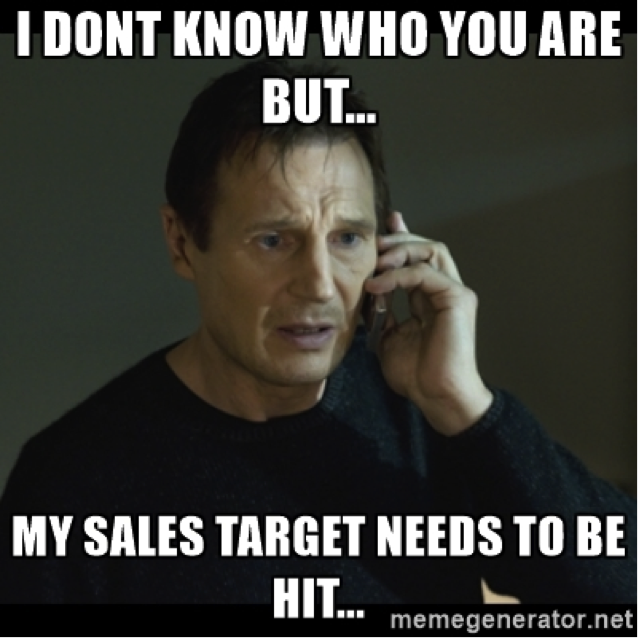Buyers’ perceptions of the archetypical sales rep don’t do us any favours. Many buyers think we’re going to try and sell them a solution regardless of their actual requirements, using manipulative or strong-arm tactics.
From my own experience of working with innovative sales teams I know this is not true, but sales professionals still need to do a lot to earn the buyers’ trust.
The sales process in my view should be collaborative. It should be about exploring how a product or service can help the buyer, taking a buyer-centric approach. This is the best way to earn the buyers’ trust, by listening to them, understanding their requirements, and tailoring your sales approach to their needs.
Download our Buyer Centric Cheat Sheet for tips on adding value throughout your sales cycle.
However, left to their own devices buyers can be a bit flaky, forgetful, and easily distracted. Moreover they will have to ensure that other decision makers are also on board and have the information they require. Pushing forward a deal can be complex and time consuming, and as a result may drop down their list of priorities. So the buyer-centric sales process can’t be left up to the buyer to control. Without any direction or regular prompts, the deal will derail and fizzle out. Instead, sales reps like us need to take control of the sales cycle, while keeping that collaborative buzz and trust going.
The Sales Cycle – Balancing Your Targets With Your Buyer’s Needs
With sales targets to meet you may be tempted to put some pressure on, push for a decision and get things signed, sealed and delivered. While this may work in some cases, in others the buyer puts the brakes on hard.
Controlling the sales cycle doesn’t mean being manipulative or excessively forceful. Control is more about helping your buyer get to the close by providing them with logical steps and help along the way. It’s about reducing friction, removing barriers, and getting agreement to progress the deal at key milestones.

First off, forget your sales targets! The sales timeline will have to be defined by your buyer, not whether you need another sale to reach quota. That said, they might have some compelling reasons to close by a given date, for example year end, and these dates can really help you keep buyers committed to the sales cycle.
For this reason it’s really important to listen to your buyer and find out what their timeline looks like. Take the collaborative approach and together you can thrash out what key dates and events need to happen between now and a potential sale. Doing this collaboratively with your buyer – helping them to manage the deal – will also help get their commitment to see it through.
By working in this way you may even be able to persuade your buyer to fit in with your quarterly targets. Ask them what you can do to help progress the sale and share with them what your ideal outcome and timeframe would be.
Keeping Buyers On Track
With the sales timeline mapped out, the next step is to keep buyers on track without being a pushy sales rep. No doubt you will have certain product marketing content to share at different stages, some of which will need to go to multiple stakeholders and feedback or questions received. We all know what the sales black hole feels like when product marketing content has been sent, and then we have to wait for a response.
Trying to time a follow up is fraught with possible negative outcomes. Too soon and you may come across as too heavy handed and destroy the trust you’ve built, too late and you find that a key decision maker has now gone on annual leave and the sale stalls. Even with an agreed sales timeline you may need additional touchpoints to ensure the sale is progressing as you hoped.
One way to follow up without being pushy, and ensure that everything is moving along smoothly, is to add value by sharing content that is not directly related to the sale. Your marketing team may have whitepapers, blog posts, and other content that you can share with the buyer to keep the sale at the forefront of their mind. Instead of following up with, “have you read the product spec yet?” you can follow up with, “thought you might be interested in this study we’ve commissioned, BTW have you got any questions about the product spec I sent?”
To take control over the sales cycle and give yourself the tools needed to follow up in a timely way, sales portals like BuyerDeck can be advantageous. For example, if you’ve sent a product sheet to your buyer for them to pass on to different stakeholders, it is hit and miss guessing when they may have read it. With an online sales portal your buyer can invite stakeholders to view product marketing content in one place (not via multiple emails) and you, the sales rep, can see who has read what and how long they’ve spent reading it. With this information you can gauge interest levels, see whether the right people have read your content, and then follow up in a timely fashion.
The other thing I’ve learnt about controlling the sales cycle is the value of reminding your buyer about why they want your product or service! We can spend a lot of time at the beginning of a sale providing the buyer with reasons for buying, but once we’ve got interest we focus more on the nitty gritty of the actual deal.
There are inevitably friction points when negotiating a sales deal, from pricing to on boarding and integration. Reminding buyers of the benefits and value they will derive from this deal is therefore an important way to keep buyers on track. Product marketing content such as case studies are very useful for this, and provide you with another touchpoint in the sales process to keep buyers engaged.
Comments? What’s your experience been of controlling the sales cycle, and do you ever go for the pushy sales rep tactic? Let me know your thoughts in the comments below.

